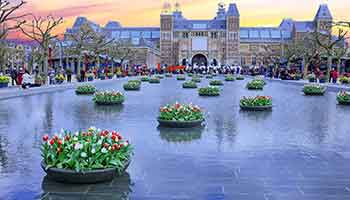Cruising Culture: Biking and Studying Abroad in Amsterdam
Studying abroad in Amsterdam is truly a one-of-a-kind experience. The city is simply beautiful, offering hundreds of historic canals, thousands of bridges, world-famous museums housed in architectural mashups of the 17th and 21st centuries, and ample green space. Connecting the entire city is a network of bike paths that keeps both the city and its people in constant motion. During my four months living and studying in the city, biking abroad took over my life, and I loved every moment.
Almost 40% of all trips in Amsterdam are made by bike. For the Dutch, biking isn't merely a mode of transportation; it’s a way of life. By the age of 12, Dutch school children take a cycling exam to ensure they understand the rules of the bike lane.
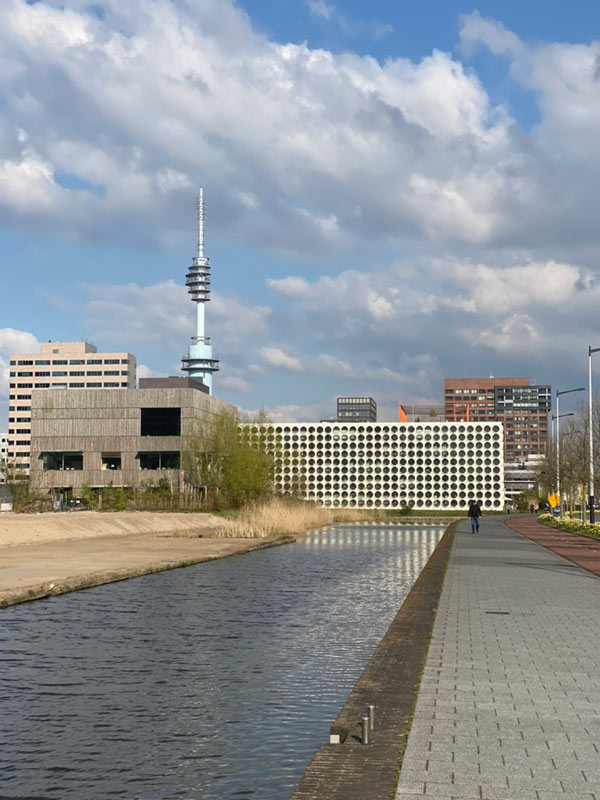
Red bike path next to a canal in Amsterdam Zuid.
Learning to Ride
Upon arriving in Amsterdam in February, one of the initial activities recommended during our orientation was selecting bikes for the semester. We learned that single-speed cruiser bikes with pedal brakes are ideal for navigating the flat terrain of the Netherlands, and there is a bike shop steps away from students' accommodation and the CEA CAPA office where bikes can be rented or purchased.
I chose an all-black bike equipped with a pedal-powered light on the front. This simple bicycle would become my most useful tool for integrating with my new city. Our onsite advisor, Frans, led our group on our first ride to Vrije Universiteit, providing essential tips on when to yield to cars and explaining Dutch hand signals.
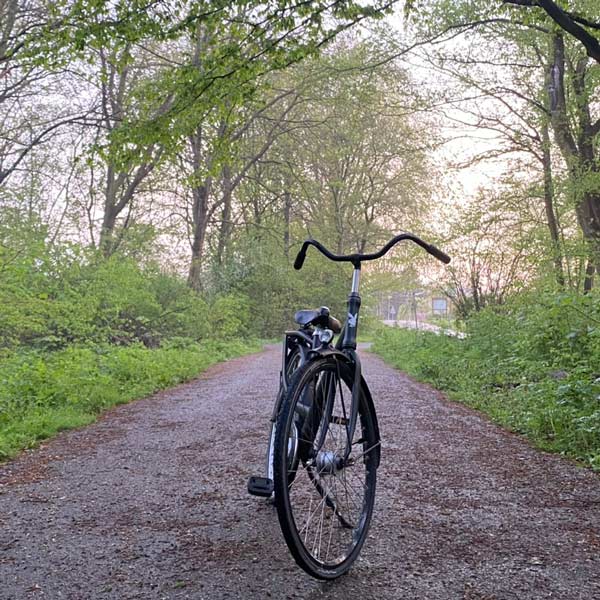
My single speed blacked out bike.
The route from our apartments to our new school skirted the city's edge and served as a calm introduction to biking in Amsterdam. After this ride, I was eager to tackle the bustling bike lanes in the city center.
On my first ride into the city, I decided to go straight to the heart: Amsterdam’s Centraal Station. Fresh from Frans' lesson on biking etiquette, I challenged myself to navigate without a map or holding my phone. Starting at my apartment in Diemen, I followed the signs reading “centrum” to get to the city center. Having taken the metro into the city before, I was confident I could find my way to Centraal Station.
As I cycled into the city center, I was surprised that the city began to feel much smaller. Cycling offered a more intimate connection with the streets and people compared to cars or the metro. Crossing the city's main metro line, I passed stops every few blocks, now appearing much closer than their underground counterparts. It was at this moment I realized that biking truly is the best way to experience Amsterdam, and I became determined to be a part of the city’s vibrant biking culture.
I eventually found my way to Centraal Station, making several wrong turns along the way that led me past places and streets I had walked through during orientation. I began the ever-evolving process of crafting my mental map of the city.
Embracing Amsterdam’s Bike Culture
Each time I went out on my bike, I tried a different route. Navigating with my phone was inefficient and risky, given the no-phone-while-biking rule. Instead, I tracked my rides using Strava (a fitness tracker app with social network features), enabling me to pinpoint exactly where I went. I also connected with other CEA CAPA students on Strava and it became somewhat of a competition to see who could go on the longest ride or log the most miles on the bike lane for a given week.
Throughout the semester, I became familiar with the organized chaos that runs Amsterdam’s streets. There is an unspoken order to bike etiquette on the street; while hand signals are important for indicating turns, I found that most Amsterdammers rely on reading each other's body language to avoid a collision.
Biking in the city is about finding your rhythm and syncing with the tempo of fellow cyclists. Shared experiences, whether waiting at traffic lights or securing bikes at crowded racks, connected me with strangers, giving me a sense of belonging and contributing to the city’s flow.

Me and my friend Ryan waiting at a traffic light on our bikes.
Unexpected Benefits of Biking
In addition to connecting me to the city, biking was a great way to stay active. It was passive exercise built into my daily routine. More importantly, biking became my remedy for stress and a tool for mental clarity. Pedaling through the streets of Amsterdam became my daily meditation. Commuting to school on my bike left me feeling relaxed and refreshed, ready to pay attention to a lecture. The simple act of going for a ride became my reset button, ensuring success in school and fostering my overall mental health.
Taking Biking Back Home
My semester in Amsterdam was amazing all around. The city and its people now feel like a second home. A significant part of this connection can be attributed to my bicycle. Studying abroad connects you to new cultures in ways different from visiting as a tourist, and if you set out to get the most from your study abroad experience, you’re likely to take a piece of the culture back home with you. Even after returning home, biking remains a proud habit of mine and still functions as my reset button. They say, “You can take the boy out of the Netherlands, but you can't take the Netherlands out of the boy!”
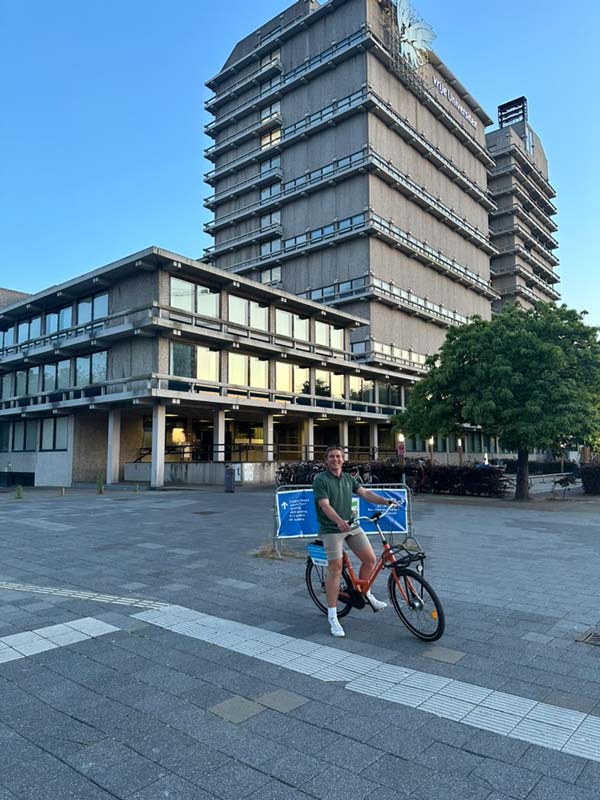
Me in front of Vrije Universiteit on a rental bike.
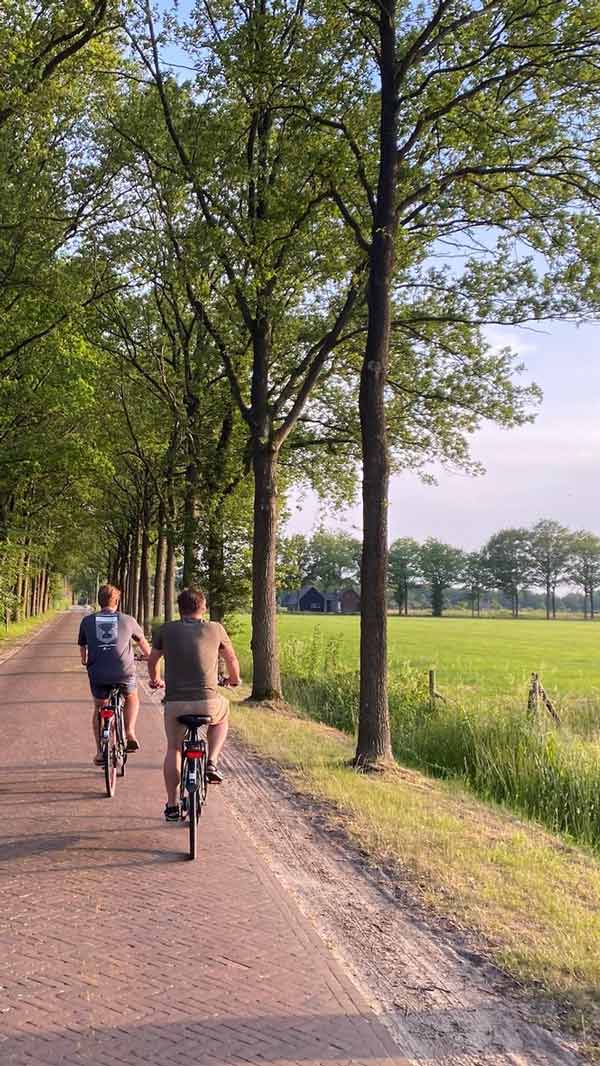
Me and my Dad biking in the Dutch countryside.










